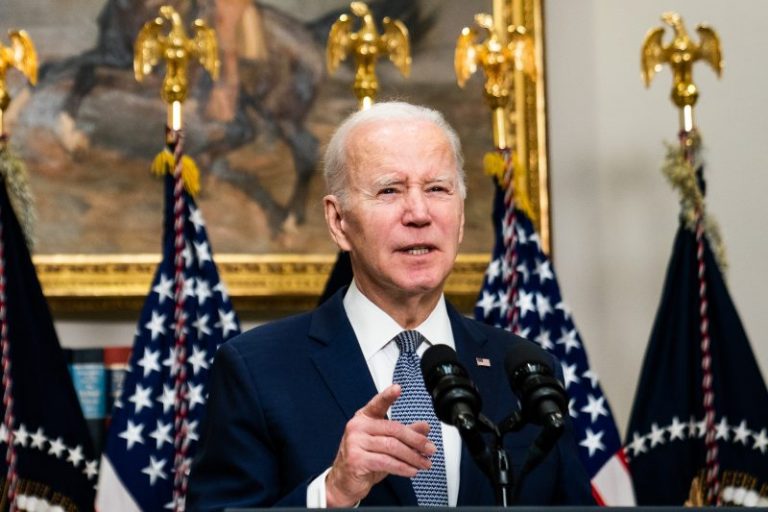President Biden on Monday sought to reassure Americans that the U.S. banking system is safe in the wake of the failure of Silicon Valley Bank and federal intervention.
“Thanks to the quick action in my administration over the past few days, Americans can have confidence that the banking system is safe,” Biden said in brief remarks at the White House. “Your deposits will be there when you need them.”
Biden’s remarks followed an announcement by his administration Sunday night that all depositors at SVB would have access to all their money on Monday morning — an extraordinary intervention aimed at averting a crisis in the financial system.
Biden said Monday that managers would be replaced at Silicon Valley Bank and any others taken over by the Federal Deposit Insurance Corporation.
“The people running the bank should not work there anymore,” Biden said.
He noted that while customers would still have access to their money, bank investors would not be protected.
“They knowingly took a risk,” Biden said. “And when the risk didn’t pay off, investors lose their money. That’s how capitalism works.”
Biden also said he would ask Congress and banking regulators “to strengthen the rules for banks to make it less likely this kind of bank failure would happen again and to protect American jobs and small businesses.”
He warned that there will be consequences for banks that collapse.
“There are important questions of how these banks got into this circumstance in the first place,” Biden said. “We must get the full accounting of what happened and why (so) those responsible can be held accountable.”
Authorities said they were also extending protection to depositors of a second bank, Signature Bank of New York, which state regulators closed on Sunday as unease in the financial sector spread. Separately, the Federal Reserve announced that it was creating a lending facility for the nation’s banks, designed to buttress them against financial risks caused by Friday’s collapse of SVB.
Fed officials declined to provide a specific figure for the size of that new loan program, but made clear it would be large enough to cover trillions of dollars in potential requests.
The series of crisis maneuvers by federal authorities — announced just hours before the start of trading in Asia — reflected the fear that has rippled through the banking sector just a few days after the collapse of Silicon Valley Bank, which many financial experts thought initially was an isolated episode.
Silicon Valley Bank
1/5
End of carousel
The decision by Treasury to backstop all deposits at SVB and Signature — not just those up to $250,000 that are insured under federal law — rested on a judgment that it was necessary to avoid a wider “systemic” meltdown. The move will probably ignite a political firestorm over the decision to protect the assets of tech firms, venture capitalists, and other rich people in California.
On a call with reporters on Sunday evening, a senior Treasury official defended the administration’s decision as necessary to stabilize the banking system and said that the move would protect companies and workers who could be harmed by the bank’s collapse — not the bank’s shareholders or executives. The official spoke on the condition of anonymity to describe internal deliberations.
The decision to protect all deposits was made following unanimous recommendations by the boards of the Federal Deposit Insurance Corporation and the Federal Reserve, the nation’s top banking regulators. Biden was also consulted on the announcement.
SVB, which largely served start-ups and venture capitalists, was shut down by regulators and taken over by the federal government after depositors scrambled to withdraw their money following a surprise filing from the firm last week that it had sold $21 billion in assets and was selling more of its own stock to shore up its balance sheet.
At the end of December, SVB held about $209 billion in total assets, making it the second-largest failure of a federally insured bank after Washington Mutual, which collapsed during the financial crisis in 2008.
Jeff Stein, David J. Lynch, Tony Romm and Tyler Pager contributed to this report.

